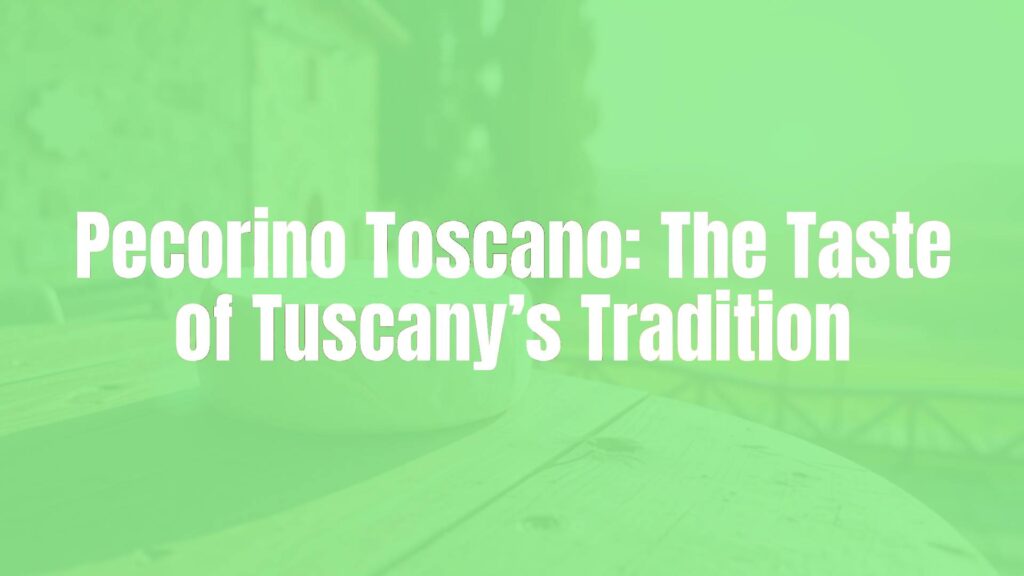Introduction to Pecorino Toscano
Pecorino Toscano is a renowned Italian cheese hailing from the picturesque region of Tuscany. Crafted primarily from sheep’s milk, this cheese stands out for its rich heritage, distinctive flavor profile, and its integral place in Tuscan culinary culture. Appreciated for both its young (fresco) and mature (stagionato) varieties, Pecorino Toscano has earned Protected Designation of Origin (PDO) status, ensuring its authenticity and traditional production methods.
Distinctive Features and Taste Profile
Unlike some sharper pecorino cheeses, Pecorino Toscano is known for its gentler, well-balanced taste featuring milky, nutty, and slightly grassy notes. The cheese’s texture ranges from supple and slightly elastic when young to firmer and grainier when aged. Its natural rind can display shades of straw, brown, or even be treated with tomato paste or olive oil, enhancing both preservation and flavor complexity.
Historical and Cultural Context
The origins of Pecorino Toscano stretch back centuries, with references to sheep’s milk cheese production in Etruscan and Roman times. The cheese has long played a vital role in regions like Val d’Orcia, Maremma, and the provinces surrounding Siena and Grosseto, where sheep farming thrives in the gentle Tuscan hills. Today, festivals celebrate its legacy and rural communities still hold cheesemaking as a treasured art, highlighting its deep cultural roots.
Production and Aging
Pecorino Toscano is produced using whole sheep’s milk, sourced from local breeds such as the Sardinian and Appenine sheep. The cheesemaking process involves curdling the milk with natural rennet, forming and pressing the curds, and briefly brining the wheels. Fresh Pecorino Toscano is typically aged for a minimum of 20 days, while aged forms rest for at least four months, developing a more robust flavor and crumbly texture. Strict PDO regulations govern these stages, upholding time-honored methods.
Culinary Uses and Pairings
Pecorino Toscano’s versatility shines in Tuscan kitchens. It is delightful on a cheese platter, often accompanied by honey, fig preserves, or fresh pears to complement its savory notes. Shaved or grated, the cheese enhances salads, vegetable dishes, and classic pasta such as pici or ravioli. A mature wheel can be enjoyed with robust Tuscan red wines, while the young variety pairs well with crisp white wines or castagnaccio, a traditional chestnut cake.
Cultural Significance and Serving Traditions
Beyond its flavor, Pecorino Toscano symbolizes rural identity, agricultural pride, and a commitment to heritage in Tuscany. Locals enjoy it at festive gatherings, countryside picnics, and even as a breakfast staple with crusty bread. The cheese also features in regional traditions, such as the ancient game of “gioco del cacio,” where cheese wheels are rolled along village streets during annual fairs.
Tips for Enjoying Pecorino Toscano
For the best tasting experience, allow Pecorino Toscano to come to room temperature before serving. Experiment with both fresh and aged versions to explore their contrasting textures and aromas. Store the cheese wrapped in parchment paper or cloth in a cool environment to maintain its integrity and flavor.
Conclusion
Pecorino Toscano is much more than a cheese—it is the taste of Tuscany’s verdant pastures, centuries-old craftsmanship, and a symbol of regional pride. Whether savored on its own or as a flavorful companion to local dishes and wines, it offers an authentic glimpse into the heart of Italian culinary tradition.

